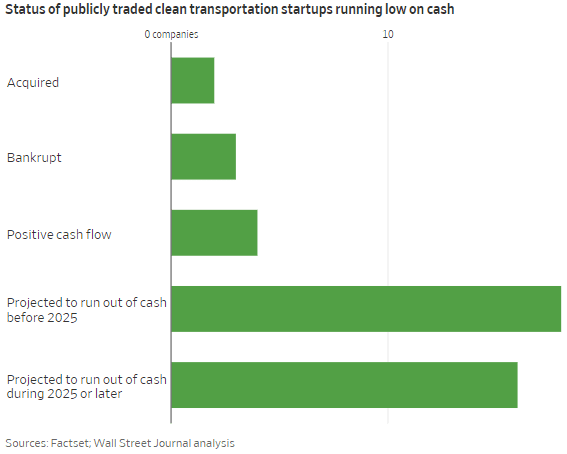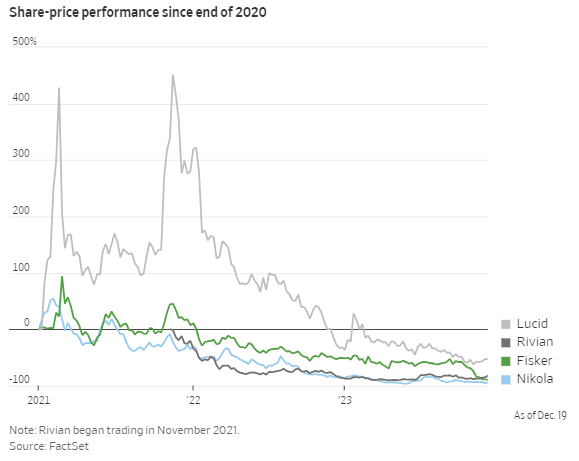- Cox Automotive forecasts full-year 2023 U.S. auto sales to finish near 15.5 million units, up from 13.9 million in 2022 and down from the market peak of 17.5 million in 2016.
- Cox Automotive forecasts annual vehicle sales pace in December to be near 15.1 million, up 1.6 million from last December’s 13.5 million pace but down from November’s 15.3 million level.
- December’s sales volume is expected to rise 6.2% from one year ago and reach 1.36 million units. Volume this month will increase by 10.4% from November, which had two less selling days.
December new-vehicle sales will be announced this week and are expected to show gains over last year’s product-constrained market.
According to the Cox Automotive forecast released last week, sales volume this month is expected to rise 6.2 percent over December 2022. The seasonally adjusted annual rate (SAAR), or sales pace, was expected to finish near 15.1 million in December. This SAAR is 1.6 million higher compared to last year’s pace. However, it reflects a slight decline from this past November’s 15.3 million level that matched the lowest SAAR of 2023, which was recorded in May.
According to Charlie Chesbrough, senior economist at Cox Automotive: “December is generally a strong month for new-vehicle sales as holiday shoppers look for year-end deals, and this year will be no exception. With supply much higher now and incentives higher as well, this December is expected to finish significantly better than last year. But high vehicle prices and high interest rates remain the industry’s Grinch right now, and that trend will continue into next year.”
2023: A Surprisingly Strong Sales Year
New-vehicle sales have been stronger and more consistent than expected throughout 2023. The new-vehicle market has been supported by growing deliveries, improving supply levels and higher incentives. Full-year 2023 U.S. auto sales, based on vehicle counts by Kelley Blue Book, are forecast to finish near 15.5 million units, an increase of 11.6% from 13.9 million in 2022 and ahead of Cox Automotive’s forecast from one year ago.
Large year-over-year gains in 2023 have been delivered by Honda, Nissan, General Motors and Tesla. The Hyundai Motor Group, with Genesis, Hyundai, and Kia brands, had a strong year in the U.S. market, growing sales by more than 12% and passing Stellantis – maker of Jeep, Ram, Dodge, Chrysler and other brands – to take the fourth spot in overall U.S. sales, behind Ford. Of all major automakers, Stellantis is the only one expected to post lower year-over-year sales, as the company pursues a strategy of lower volume and higher revenue per sales.
Higher New-Vehicle Inventory Levels and Strong Fleet Activity Support Improved Sales Pace
New-vehicle inventory volume was 2.56 million at the start of December, higher by more than 900,000 units from one year ago. Meanwhile, days’ supply had climbed to 71, up from 60 at the start of November and more than 17 days higher than December 2022. At the beginning of December, new-vehicle days’ supply is closer to the pre-pandemic norm than in the last several years.
Fleet sales are expected to rise in December after experiencing two months of pull-back in commercial and rental vehicle sales. The lower fleet volume was particularly affected by big drops in fleet sales from the Detroit Three due to the UAW strike.
Chesbrough notes: “With the strike now in the rearview mirror, December is expected to show a return to stronger fleet activity, and these sales could have a big impact on the month’s final tally.”
December 2023 New-Vehicle Sales Forecast
|
Sales Forecast1 |
Market Share |
||||||||
|
Segment |
Dec-23 |
Dec-22 |
Nov-23 |
YOY% |
MOM% |
Dec-23 |
Nov-23 |
MOM |
|
|
Mid-Size Car |
80,000 |
75,179 |
66,271 |
6.4 % |
20.7 % |
5.9 % |
5.4 % |
0.5 % |
|
|
Compact Car |
85,000 |
68,701 |
77,552 |
23.7 % |
9.6 % |
6.2 % |
6.3 % |
0.0 % |
|
|
Compact SUV/Crossover |
230,000 |
187,978 |
208,670 |
22.4 % |
10.2 % |
16.8 % |
16.9 % |
0.0 % |
|
|
Full-Size Pickup Truck |
190,000 |
208,849 |
171,998 |
-9.0 % |
10.5 % |
13.9 % |
13.9 % |
0.0 % |
|
|
Mid-Size SUV/Crossover |
215,000 |
222,595 |
191,579 |
-3.4 % |
12.2 % |
15.8 % |
15.5 % |
0.3 % |
|
|
Grand Total2 |
1,365,000 |
1,285,553 |
1,236,680 |
6.2 % |
10.4 % |
||||
|
1 Cox Automotive Industry Insights data |
|
2 Total includes segments not shown |
Full-Year 2022 U.S. New-Vehicle Sales Forecast Highlights
- New-vehicle sales are forecast to increase 11.6% in 2023, reaching 15.5 million units.
- New auto sales in Q4 will be down 4.2% compared to Q4 2022.
- GM retains the sales title over Toyota in 2023 while Hyundai Motor Group jumps past Stellantis; Honda sees the largest year-over-year sales increase of the major manufacturers.
Full-Year 2023 New-Vehicle Sales Forecast
|
OEM |
Q4 2023 |
vs Q4 2022 |
CY 2023 |
vs CY 2022 |
Share |
Share |
Difference |
|
GM |
609,437 |
-8.9 % |
2,567,251 |
13.70 % |
16.3 % |
16.6 % |
0.3 % |
|
Toyota |
604,642 |
2.4 % |
2,233,458 |
5.90 % |
15.2 % |
14.4 % |
-0.8 % |
|
Ford |
457,816 |
-7.9 % |
1,954,690 |
5.60 % |
13.3 % |
12.6 % |
-0.7 % |
|
Hyundai Motors |
405,760 |
-5.7 % |
1,656,242 |
12.30 % |
10.6 % |
10.7 % |
0.1 % |
|
Stellantis |
331,266 |
-13.0 % |
1,514,804 |
-2.10 % |
11.1 % |
9.8 % |
-1.4 % |
|
Honda |
331,776 |
-2.2 % |
1,302,451 |
32.40 % |
7.1 % |
8.4 % |
1.3 % |
|
Nissan Mitsu |
220,932 |
-7.6 % |
985,717 |
20.90 % |
5.9 % |
6.4 % |
0.5 % |
|
Tesla |
156,746 |
0.1 % |
650,259 |
24.50 % |
3.8 % |
4.2 % |
0.4 % |
|
VW |
177,561 |
6.1 % |
634,307 |
13.70 % |
4.0 % |
4.1 % |
0.1 % |
|
Subaru |
165,683 |
1.6 % |
632,903 |
13.70 % |
4.0 % |
4.1 % |
0.1 % |
|
BMW |
102,994 |
12.1 % |
380,126 |
5.00 % |
2.6 % |
2.5 % |
-0.2 % |
|
Mazda |
80,379 |
-9.5 % |
352,996 |
19.70 % |
2.1 % |
2.3 % |
0.2 % |
|
Daimler |
90,998 |
1.1 % |
352,729 |
0.50 % |
2.5 % |
2.3 % |
-0.3 % |
|
Geely (Volvo) |
40,008 |
10.8 % |
141,037 |
26.50 % |
0.8 % |
0.9 % |
0.1 % |
|
Tata (JLR) |
19,386 |
-7.9 % |
78,149 |
14.00 % |
0.5 % |
0.5 % |
0.0 % |
|
Rivian |
14,599 |
-6.2 % |
50,749 |
149.60 % |
0.1 % |
0.3 % |
0.2 % |
|
Lucid |
1,497 |
2.8 % |
5,764 |
117.00 % |
0.0 % |
0.0 % |
0.0 % |
|
NATION |
3,814,066 |
-4.2 % |
15,499,224 |
11.60 % |
100.0 % |
100.0 % |
0.0 % |
All percentages are based on raw volume, not daily selling rate. There were 27 selling days in both December 2023 and December 2022, while there were 25 selling days in November 2023.
Forecast: 2024
As the auto market drives into 2024, the Cox Automotive Economic and Industry Insights team anticipates weak economic growth, higher new-vehicle inventories, and an end to the seller’s market. Overall, the team expects 2024 to be the best year for car buyers since the pandemic. Last week, Cox Automotive Chief Economist Jonathan Smoke shared his team’s expectations for the U.S. automotive market in the year ahead. Forecast: 2024 outlines five themes expected to shape the automotive industry in the coming year.
About Cox Automotive
Cox Automotive is the world’s largest automotive services and technology provider. Fueled by the largest breadth of first-party data fed by 2.3 billion online interactions a year, Cox Automotive tailors leading solutions for car shoppers, automakers, dealers, retailers, lenders and fleet owners. The company has 25,000+ employees on five continents and a family of trusted brands that includes Autotrader®, Dealertrack®, Kelley Blue Book®, Manheim®, NextGear Capital™ and vAuto®. Cox Automotive is a subsidiary of Cox Enterprises Inc., a privately-owned, Atlanta-based company with $22 billion in annual revenue. Visit coxautoinc.com or connect via @CoxAutomotive on X, CoxAutoInc on Facebook or Cox-Automotive-Inc on LinkedIn.
SOURCE Cox Automotive












